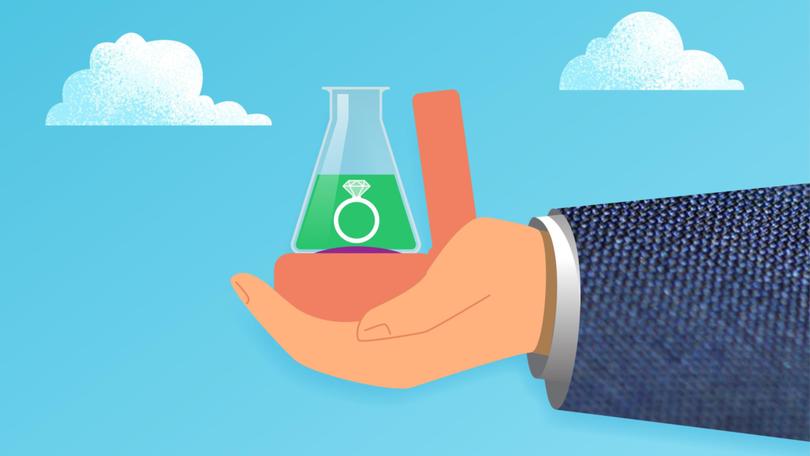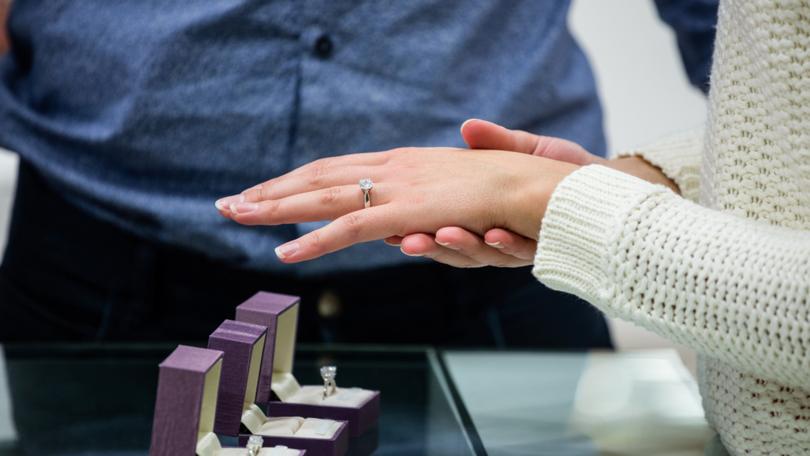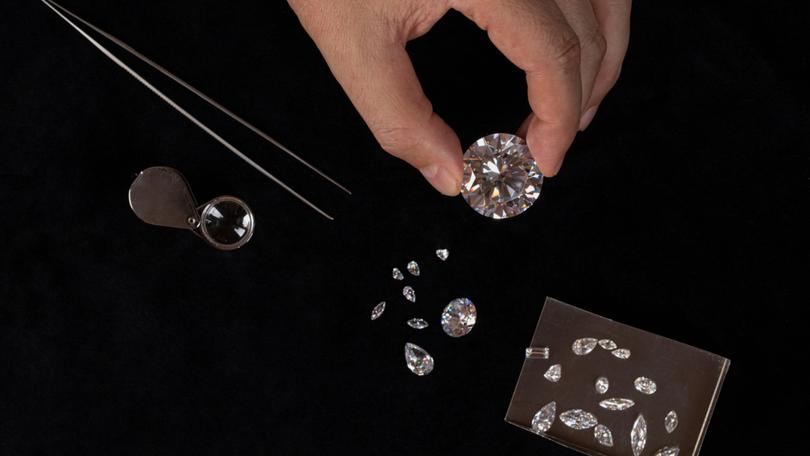The Economist: Diamonds may not be forever, thanks to pressure from the lab

Valentine’s day is fast approaching. Inside sock drawers around the world, men (and a few women) will be hiding rings intended to convey their everlasting love.
Since De Beers, the world’s leading diamond company, ingeniously announced that “diamonds are forever” in the 1940s, most engagement rings have included a diamond — and an expensive one at that.
The average American will spend $5000 on the band for their proposal.
Sign up to The Nightly's newsletters.
Get the first look at the digital newspaper, curated daily stories and breaking headlines delivered to your inbox.
By continuing you agree to our Terms and Privacy Policy.A lot has changed in recent years, however.
The most important development is the soaring popularity of lab-grown diamonds.
Identical to their natural alternatives — except to gemologists with specialist equipment — such stones now make up around half of the American DER market, reckons Martin Rapaport, chairman and founder of Rapaport, a diamond pricer, up from a tiny fraction a decade ago. (DER is the unglamorous acronym the industry uses for “diamond engagement ring”.)
American jewellers report that lab-grown diamonds now account for more than half their sales of loose diamonds (ie, those not in a ring), an increase from one in 10 at the beginning of 2020.
For the past few years it has been easier to produce a diamond in a factory than to extract one from the ground.
This is reflected in price tags.
At one leading jeweller, $5000 spent on a lab-grown diamond will yield a rock roughly four times bigger than if the money was spent on a natural diamond of similar quality.
As a consequence, the parsimonious boyfriend now faces an alluring proposition: a larger, nicer diamond; a happier fiancée; and a healthy status symbol to boot.
Little surprise, then, that the average size of diamonds purchased in America is on the rise, even as the amount of money spent on engagement rings is falling.
The world has entered an era of frugal matrimony.
So far the trend has been excellent news for sellers of lab-grown diamonds, and terrible for those flogging the traditional variety.

America, by far the biggest purchaser of lab-grown diamonds, has seen its imports of cut-and-polished natural diamonds fall by half between 2022 and 2024, according to Rapaport.
De Beers’s revenues have decreased by a third.
Some industry analysts extrapolate from this and foresee a future filled to the brim with lab-grown gems.
And for other kinds of products they would be correct.
With “ordinary goods”, consumer demand moves inversely to prices: when something gets cheaper, people want more of it.
When air travel was expensive, for example, few could afford it.
Now you can hop from London to Madrid for £50 ($100), many more do so— and the airline business has boomed.
However, as anyone who has bought one is aware, engagement rings are not ordinary.

Being a (hopefully) one-off purchase to celebrate a significant milestone, the price tag is as important as the ring itself.
A large, gleaming rock on a partner’s finger illustrates the strength of the proposer’s love (and perhaps, more accurately, the size of their wallet).
Diamonds are the stone of choice because they are scarce and, as a result, expensive.
Lab-grown diamonds upset this equation, as they are both more common and indistinguishable from a mined rock.
Their availability is not limited by what was formed billions of years ago in the Earth’s crust, nor by the desire of miners to spend lots of money to extract them, but by what sellers find profitable.
Wholesale synthetic-diamond prices have fallen by 90 per cent over the past six years, according to Paul Zimnisky, a diamond-industry analyst, meaning that rocks can now be sold at much lower prices for similarly strong profits.
And wholesale prices are set to keep falling as manufacturing techniques continue to be refined and competition between manufacturers intensifies.
Will lab-grown diamonds become cheap enough to undermine the entire industry?
Owing to the similarities between synthetic and natural diamonds, at some point the stones may no longer work as a way to signal both love and wealth.
Jewellers have so far not passed on all of the collapse in wholesale prices to consumers, preferring instead to increase mark-ups.
Indeed, Mr Zimnisky reckons that retail margins on lab-grown diamonds have climbed to nearly 90 per cent for three-carat rocks, up from 30 per cent five years ago.
Margins on mined stones are still about 30 per cent.

Rock bottom
But this dynamic seems unlikely to last.
For one thing, wholesale synthetic-diamond prices may not yet have bottomed out: “I can see $10-15 a carat coming soon in lab diamonds’ future,” predicts Mr Rapaport.
Moreover, the diamond market is sufficiently competitive that jewellers will struggle to retain such fat margins.
Some online retailers now flog healthy stones for just a few hundred dollars.
Although a boyfriend might be happy to take a chance on a $4000, larger lab-grown diamond rather than a $6000 smaller, natural stone, he will probably turn his nose up at a $300 ring compared with a $6000 one.

Nobody wants to be quite that cheap a husband, despite celebrity endorsements from people like Emma Watson and Lady Gaga.
As lab-grown diamonds become a feature of costume jewellery and the wares of discount retailers (such as Pandora, which already sells rings featuring lab-grown diamonds for just $200), their status as a luxury gift worthy of a Valentine’s Day engagement looks set to crumble.
This could spell yet more trouble for companies selling natural diamonds, whether in Antwerp and New York or on the high street.
In the face of growing competition, the price of a ring-size single-carat stone has fallen by 37 per cent over the past six years.
If, as seems likely, lab-grown diamonds lose their signalling value, a much steeper fall in prices is in store.
To survive, luxury jewellers will have to persuade their clientele that a natural diamond is still worth the outlay at a time when less-well-heeled shoppers will be buying near-identical stones for their children’s birthdays.
Perhaps, then, De Beers was wrong. A diamond is not for ever.
Originally published as Don’t propose with a diamond
